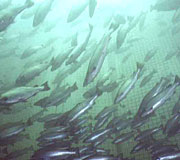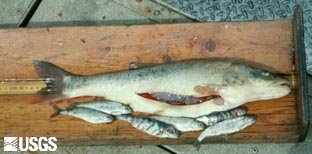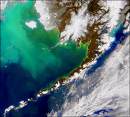Ocean salmon farms breed sea lice that infect and kill wild salmon, according to a new study.
Aquaculture critics have raised this concern for years, but supporters have disagreed. The new study is fairly solid in proving that a problem does exist and solutions are required.
The study found that young salmon died after being infected with as few as one louse, that the

more louse on the fish the more likely it was to die, and that the more salmon farms along the migration route, the more likely the fish were to die. The highest mortality rate, 95 percent, came in the channel with three salmon farms at the end of the migration season, when sea lice were most prevalent.
It's not surprising really, that breeding large populations of salmon parasites can be harmful to wild salmon that swim through those clouds of parasites. Given the economic significance of salmon farming, however, it's also not surprising that there is perhaps a bit of denial operating among those responsible for writing the rules.
Indeed, Andrew Thomson, acting head of aquaculture for Fisheries and Oceans Canada's Pacific region, said "It's a complex issue. We need to do more research on it." Now that's progress.
 A tuna tail will save us? Maybe, if the tuna tail power generator works as hoped.
A tuna tail will save us? Maybe, if the tuna tail power generator works as hoped.





















